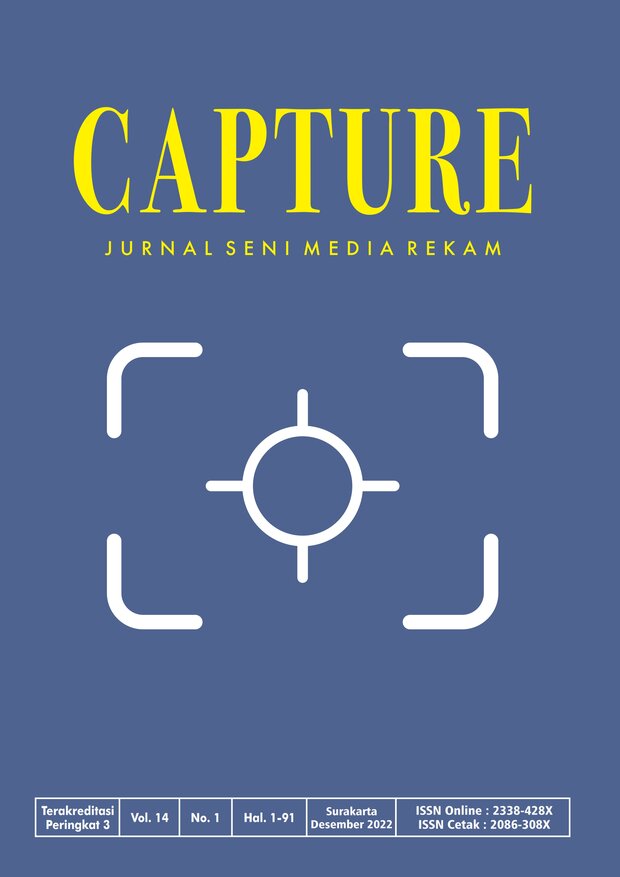ANTHROPOCENTRIC THEOLOGY IN A BIOPIC FILM : A STUDY OF THE ISLAMIC CONCEPTION OF K.H. HASYIM ASY'ARI IN THE FILM SANG KIAI
DOI:
https://doi.org/10.33153/capture.v14i1.4132Keywords:
Anthropocentric theology, biopic films, Islamic, onceptionsAbstract
The film Sang Kiai was created based on the biographical history of a person who played a significant role in the Battle of Surabaya on November 10, 1945, a pivotal event in Indonesian history. This film chronicles the story of K.H. Hasyim Asy'ari, a great scholar from Tebuireng Islamic Boarding School in Jombang, the founder and leader of Nahdlatul Ulama (NU), the largest Islamic religious mass organization in Indonesia, as well as a national hero. Accordingly, this study proposes a research problem of the extent to which anthropocentrism theology serves as the foundation for the Islamic conception of K.H. Hasyim Asyari in the movie Sang Kiai. The study of the film Sang Kiai applied an anthropocentric theological reading approach and a qualitative descriptive methodology. The study’s findings reveal that K.H. Hasyim Asy'ari utilized anthropocentric theology to raise Muslims’ awareness to fight the practices of colonialism and break free from its shackles while also fighting the ignorance of aqidah. In sum, anthropocentric theology is the basis for the legitimacy and principles of the Islamic conception of K.H. Hasyim Asy'ari’s attitudes, behavior, thought patterns, and actions to overcome Muslims’ problems.
Downloads
References
Armantono, R. B., & Paramita, S. (2017). Penulisan Skenario Film Panjang (2nd ed.). Jakarta: FFTV IKJ.
Ayawaila, G. R. (2008). Dokumenter: Dari Ide Sampai Produksi. Jakarta: IKJ Press.
Denzin, N. K., & Lincoln, Y. S. (1994). Entering the Field of Qualitative Research. CA: Sage Publication.
Denzin, N. K., & Lincoln, Y. S. (2011). The Sage Handbook of Qualitative Research 1 ((Terj.)). Yogyakarta: Pustaka Pelajar.
Gufron, M. (2018). Transformasi Paradigma Teologi Teosentris menuju Antroposentris (Telaah atas Pemikiran Hasan Hanafi). Millati, Journal of Islamic Studies and Humanities, 3(1), 141–171.
Kartika, B. A. (2021a). Historiografi Biografi sebagai Sumber Adaptasi Teks Sejarah dalam Film Biopik Soekarno. In R. A. Sugihartono (Ed.), SANGGIT : Ngudi Kasampurnan (pp. 635–676). Surakarta: ISI Press.
Kartika, B. A. (2021b). Teologi Antroposentris dalam Sastra Biografi: Kajian atas Novel Penakluk Badai Karya Aguk Irawan M.N. Jurnal Semiotika: Ilmu Sastra Dan Linguistik, 22(2), 68—84.
Kartika, B. A., Prihatini, N. S., Hastanto, S., & Dharsono. (2019). Analysis of Docudrama History anda Referential Reconstruction of Sang Kiai Movies: Adaptation of Biographical Historiographic Texts to Biopic Film. CAPTURE : Jurnal Seni Media Rekam, 10(2), 20–44. doi: 10.33153/capture.v10i2.2366
Manijo. (2013). Mengkonstruk Akhlak Kemanusiaan dengan Teologi Kepribadian Hasan Hanafi (Perspektif Teologi Antroposentris). Jurnal Fikrah, 1(2).
Mansur, M. (2000). Kritik Hassan Hanafi atas Pemikiran Kalam Klasik. Esensia Jurnal Ilmu-Ilmu Ushuluddin, 1(11).
Mckee, A. (2003). Textual Analysis: A Beginner’s Guide. London: Sage Publication.
Misrawi, Z. (2010). Hadratussyaikh Hasyim Asy’ari Moderasi, Keumatan, dan Kebangsaan. Jakarta: Kompas.
Mufidah, L. L. N. (2017). Pendekatan Teologis dalam Kajian Islam. Jurnal Misykat, 2(1), 151–162.
Pratista, H. (2008). Memahami Film. Yogyakarta: Homerian Pustaka.
Rahmat, P. S. (2009). Penelitian Kualitatif. Jurnal EQUILIBRIUM, 5(9), 1–8.
Siroj, S. A. (2015). Menjaga Marwah Ulama. In A. Ubaid & M. Bakir (Eds.), Nasionalisme dan Islam Nusantara. Jakarta: Kompas.
Sumarno, M. (1996). Dasar-Dasar Apresiasi Film. Jakarta: Grasindo.
Upe, A., & Damsid. (2010). Asas-Asas Multiple Researches (dari Norman K. Denzin hingga John W. Creswell dan Penerapannya). Yogyakarta: Tiara Wacana.
Zaini, A. H. F. (2018). Nasionalisme Kaum Sarungan. Jakarta: Kompas.
Downloads
Published
Issue
Section
License
Copyright (c) 2022 Bambang Aris Kartika

This work is licensed under a Creative Commons Attribution-ShareAlike 4.0 International License.
Copyright
Authors who publish with Capture: Jurnal Seni Media Rekam agree to the following terms:
- Authors retain copyright and grant the journal right of first publication with the work simultaneously licensed under a Creative Commons Attribution License (CC BY-SA 4.0) that allows others to share the work with an acknowledgment of the work's authorship and initial publication in this journal.
- Authors are able to enter into separate, additional contractual arrangements for the non-exclusive distribution of the journal's published version of the work (e.g., post it to an institutional repository or publish it in a book), with an acknowledgment of its initial publication in this journal.







